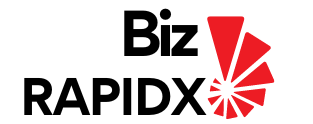 For the housings of the TV box and remote control of its premium product MagentaTV One, Deutsche Telekom was looking for a more sustainable material without having to compromise on performance. Part of the housing had to display high transmittance in the range of 780 to 1100 nm (near-infrared – NIR) to enable remote control. Due to the remaining additives from previous applications, this was not possible with classic, mechanically recycled plastic. At the same time, Deutsche Telekom was looking for a more sustainable alternative to fossil-based plastics.
For the housings of the TV box and remote control of its premium product MagentaTV One, Deutsche Telekom was looking for a more sustainable material without having to compromise on performance. Part of the housing had to display high transmittance in the range of 780 to 1100 nm (near-infrared – NIR) to enable remote control. Due to the remaining additives from previous applications, this was not possible with classic, mechanically recycled plastic. At the same time, Deutsche Telekom was looking for a more sustainable alternative to fossil-based plastics.
During the joint developments with Covestro, it turned out that a plastic from the Makrolon® RE series meets the aforementioned requirements very well. This is an ISCC PLUS-certified polycarbonate with raw materials from biological waste and residues allocated via the mass balance approach.
Compared to a fossil-based standard type, the selected polycarbonate during its production (cradle to gate[1]) has a CO2 footprint that is reduced by around 80 percent with a share of more than 85 percent allocated renewable raw materials. Makrolon® RE polycarbonate is part of Covestro’s CQ family, a label used by the company to identify products with a physical or attributed content of at least 25 percent alternative raw materials.
In addition to the selection of more sustainable materials, the development of the new device focused on energy efficiency during use. Deutsche Telekom specifies the carbon dioxide equivalents saved for 1,000 MagentaTV One-devices in energy-saving mode at around 15,500 kilograms per year. Accordingly, the telecommunications company has marked the device with the #GreenMagenta label to underline its positive contribution to climate protection and the responsible use of resources.
“Reducing the CO2 emissions of plastic parts is an important issue for us in order to achieve our ambitious climate targets,” says Dr. Steffen Wasmus, Group Partnering & Devices at Deutsche Telekom. “Makrolon® RE makes a valuable contribution to this. The collaboration with the global Covestro team was extremely helpful, as they significantly supported us in the selection and application of suitable materials.” Deutsche Telekom aims to achieve net-zero emissions in scope categories 1 to 3 by 2040 across the entire value chain, from production to the use phase of their products.
“Deutsche Telekom is an important partner for us. We jointly want to achieve climate goals and drive the transition to renewable raw materials. Makrolon® RE makes it possible to use biowaste as a renewable carbon source for the telecommunications value chain without compromising on performance and design,” adds Dr. Niklas Meine, Industrial Marketing Electrical & Electronics in the Europe, Middle East, Africa (EMEA) region at Covestro.
Deutsche Telekom’s design team was particularly interested in high-quality processing of the devices, as well as intuitive handling of the device and user-friendly plug-and-play installation.
The mass-balanced polycarbonates from the Covestro RE portfolio offer the important advantage of achieving virgin product quality and covering a wide range of applications, as they have the same good product and processing properties as their purely fossil-based counterparts. In the case of MagentaTV One, Deutsche Telekom is for the first time using a Makrolon® RE which displays high transmittance in the near-infrared (NIR) radiation for the TV box and remote
[1] This takes into account a partial product life cycle from raw material extraction (cradle) to the factory gate (of Covestro), also known as cradle-to-gate assessment. The methodology is based on the ISO 14040 and 14044 standards and has been critically tested by the TÜV Rheinland on plausibility. The calculation takes into account biogenic carbon uptake.
